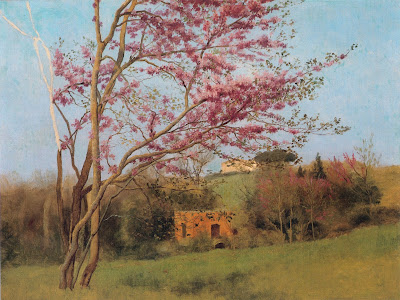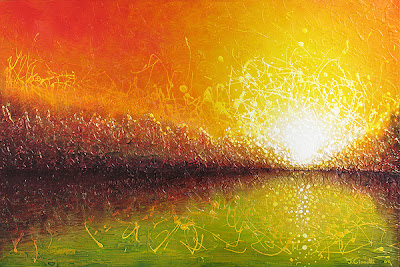Many of us will be tempted to think that landscape painting is an exact replication of the landscape an artist sees right before him. The exact numbers of physical features such as hills, the exact number of living features such as plants or humans, and the exact character of abstract elements such as sunlight or rain. This, however, is never the case. Just like any other painting, which involves the artist's personal intuitions, a landscape painting is an expression of what the artist wants to see. And contrary to the popular belief that landscape paintings are made outdoors, artists usually prefer to do their work indoors. They usually make rough sketches outdoors, and then fill out the painting more slowly in their studios.
No matter where they choose to paint, there is one issue they all need to deal with while painting landscapes: depth. How does one show depth on a flat canvas? You will find the use of a winding path, a change in the size of things to make them appear closer or further, the use of overlap, a change in the sharpness of images, or the use of diagonal composition.
George Catlin, Albert Bierstadt and Thomas Moran were three famous American painters who used the above techniques to paint magnificent American landscapes. Catlin made two paintings of the same landscape, and called it River Bluffs. He said that these were the toughest paintings he made, because there was nothing in the landscape to arrest the eye, there were just hills hundreds of feet high, covered in green, for about twenty or thirty miles.
Thomas Moran's The Chasm of the Colorado is a huge and very famous landscape painting of the Grand Canyon. One look at it, and we might be tempted to think Moran actually saw this site before him. It was, however, the result of a quiet, relentless effort in the artist's studio, of Moran putting together several small sketches he made while on a trip to the Grand Canyon.









